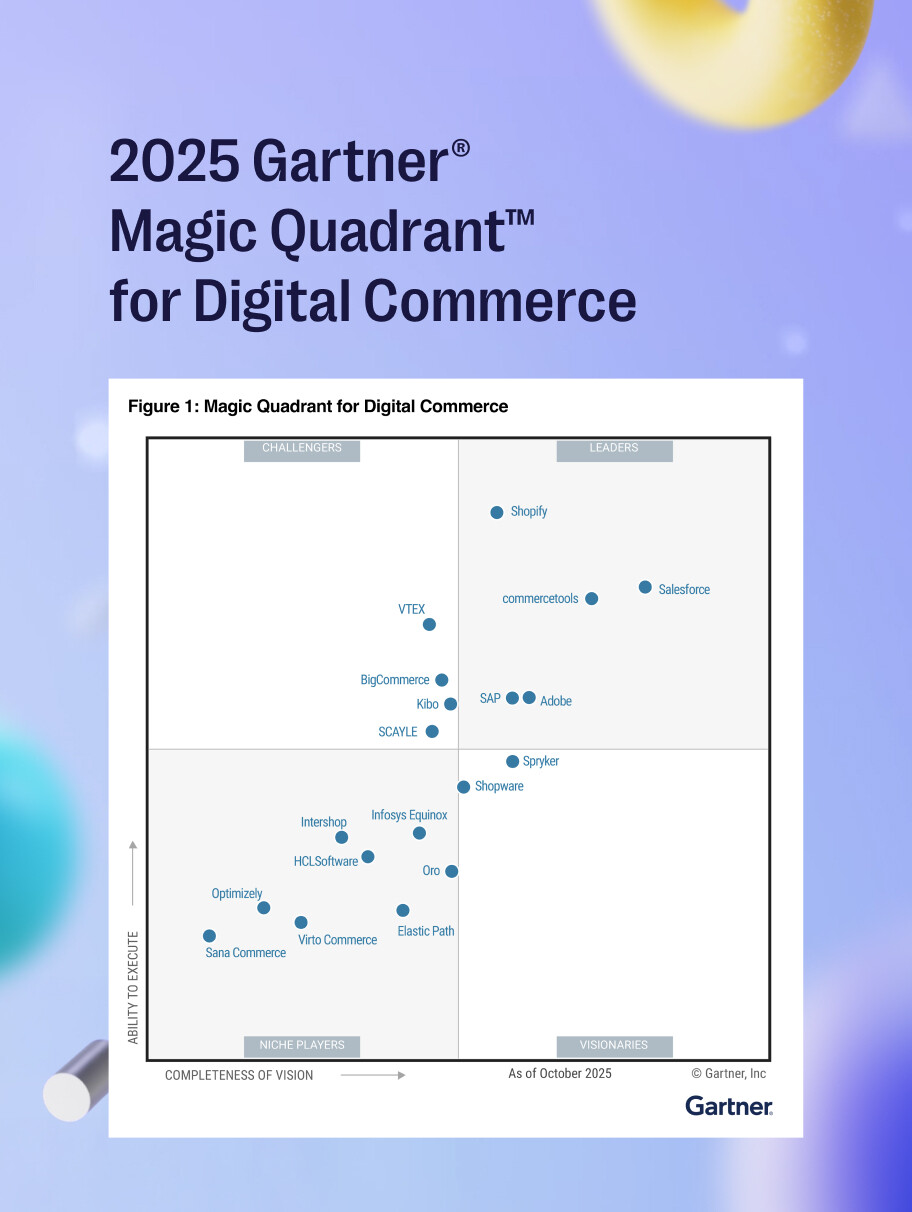

The 2025 Gartner Magic Quadrant has once again named commercetools as a Leader in digital commerce based on its completeness of vision and ability to execute.
As the digital commerce market focuses on transformational technologies, such as agent-based AI and unified commerce, it’s more critical than ever to identify the vendors best positioned to drive your business forward.
Download the complete Gartner report with unbiased and straightforward evaluations of 19 digital commerce vendors — and make confident, future-ready decisions for your commerce strategy.
Gartner, Magic Quadrant for Digital Commerce, Sandy Shen, Aditya Vasudevan, 3 November 2025.
Gartner Peer Insights content consists of the opinions of individual end users based on their own experiences with the vendors listed on the platform should not be construed as statements of fact, nor do they represent the views of Gartner or its affiliates. Gartner does not endorse any vendor, product or service depicted in this content nor makes any warranties, expressed or implied, with respect to this content, about its accuracy or completeness, including any warranties of merchantability or fitness for a particular purpose.
GARTNER is a registered trademark and service mark of Gartner and Magic Quadrant and Peer Insights™ are registered trademarks of Gartner, Inc. and/or its affiliates in the [AG1] U.S. and internationally and are used herein with permission. All rights reserved.
This graphic was published by Gartner, Inc. as part of a larger research document and should be evaluated in the context of the entire document. The Gartner document is available upon request from commercetools.